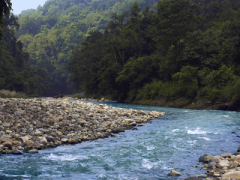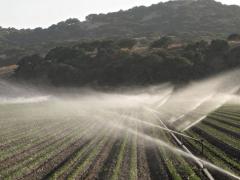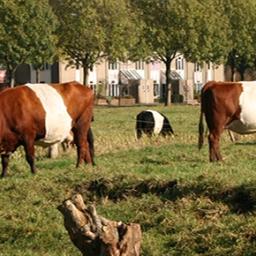Human alteration of the global nitrogen and phosphorus soil balances for the period 1970–2050
The Millennium Ecosystem Assessment (MEA) scenarios allow for describing contrasting future developments in agricultural nutrient use under changing climate for the next five decades. Massive increases in the flows of N and P are expected in all scenarios in the developing countries. In industrialized countries differences between the scenarios indicate that with a proactive approach the N and P use in agriculture can be controlled.
The scenarios
Differences between scenarios are related to the total crop and livestock production and the efficiency of nutrient use in agriculture. The scenarios with a reactive approach to environmental problems show increases in agricultural N and P soil balances in all developing countries. In the scenarios with a proactive attitude, N balances decrease and P balances show no change or a slight increase. In Europe and North America, the N balance will decline in all scenarios, most strongly in the environment-oriented scenarios; the P balance declines (proactive) or increases slowly (reactive approach). Even with rapidly increasing agricultural efficiency, the global N balance, ammonia, leaching and denitrification loss will not decrease from their current levels even in the most optimistic scenario. Soil P depletion seems to be a major problem in large parts of the global grassland area. Turning to the nutrient soil balances, the scenarios with a reactive approach portray significant increases in N and P balances in Asia, Central and South America and Africa, and they portray no changes in North America, Europe and Oceania. However, in the scenarios with a proactive approach to environmental problems, the increase in N and P balances is much less or even decreasing in North America, Europe and Oceania.
Agricultural management
Apart from differences in population, economy, food consumption and production, energy crop production, and climate, the results of our scenarios indicate that agricultural management aimed at closing nutrient cycles has a major impact on nutrient balances. First, the scenarios differ in the efficiency of N and P use in crop and grass production. We also show that recycling of animal manure and human excreta has large potential to substitute fertilizer. Given the strong prejudice and social inhibition against the handling and use of human excreta in many countries, we do not know if this is realistic.
Future global N and P cycles
The global N cycle may be accelerated further in the coming decades, with an increase of the balance by up to 50% in the most pessimistic case; however, in the most optimistic scenario the balance will remain constant at the current high level of about 150 Tg yr-1. The implications of the scenarios for the global P cycle are in increase of the P balance in all scenarios. This is caused by our assumption of a strong increase in the use of P fertilizers in developing countries. The P balance will probably increase the accessibility and availability of soil P for agricultural production. In future this will lead to an increase of P use efficiency. A negative effect is the potential loss of P by erosion. Our analysis suggests that the world’s phosphate rock reserves may be depleted before the end of this century.
Global NEWS project
The data on N and P input and crop export from diffuse sources, in this paper, together with the estimates for N and P in urban wastewater from the work of Van Drecht et al. (Global nitrogen and phosphate in urban waste water for the period 1970-2050), are used in Global NEWS model (Seitzinger et al., Global River Nutrient Export Trajectories 1970-2050: A Millenium Ecosystem Scenario Analysis) for predicting the loads of the various N and P compounds in rivers.
Related articles
Authors
Specifications
- Publication title
- Human alteration of the global nitrogen and phosphorus soil balances for the period 1970–2050
- Publication date
- 18 December 2009
- Publication type
- Article
- Publication language
- Dutch
- Magazine
- Global Biogeochem. Cycles
- Issue
- Volume 23, Issue 4, December 2009
- Product number
- 104




